The Volunteer State is home to more than 400 unique bird species! Whether you’re an avid birder or simply casually enjoy observing birds in your backyard, it can be helpful to know how to identify at least a few of the many fascinating and beautiful birds living in Tennessee. Below, we’ll cover 15 incredible birds that spend their winters in Tennessee, from the strikingly handsome great horned owl to the humble house finch.
1. Mourning Dove (Zenaida macroura)
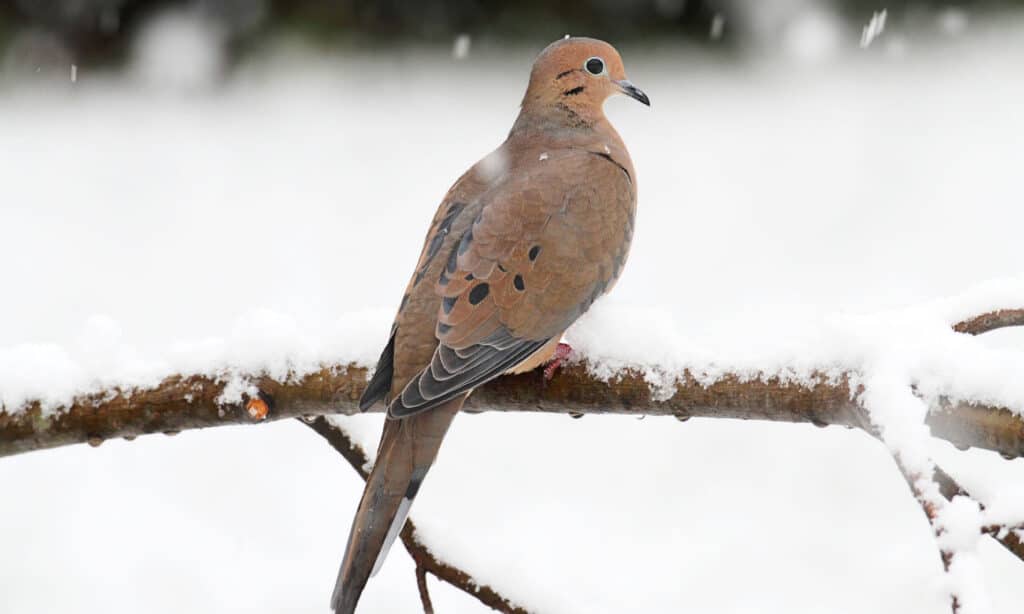
The mourning dove’s light brown wings have small, round black spots and gray undersides.
©iStock.com/SteveByland
We’ll begin our list with the mourning dove, a medium-sized bird easily identifiable by its light tan body marked by a small round black spot underneath each eye. Its tail is long and narrow with white edges, with black-spotted wings.
2. Great Horned Owl (Bubo virginianus)
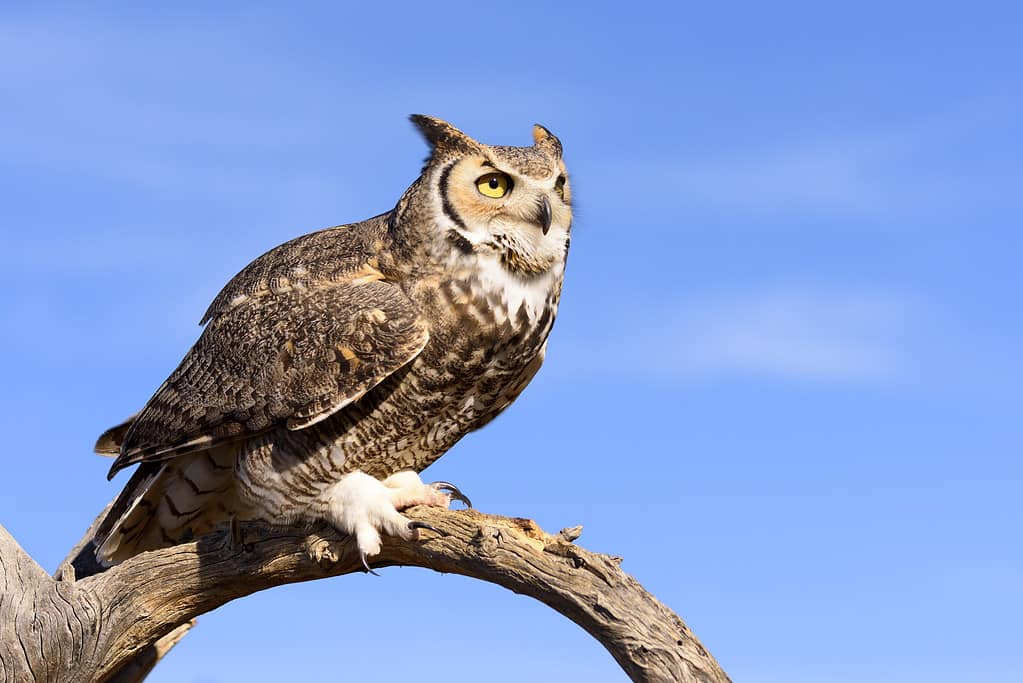
The great horned owl gets its name from the tufts of pointed feathers above each eye, which resemble horns.
©kojihirano/iStock via Getty Images
The great horned owl is one of Tennessee’s most giant resident winter birds. This nocturnal species has large yellow eyes adorned with horn-like tufts of feathers. It weighs roughly three pounds and can reach 20+ inches in height.
3. Tufted Titmouse (Baeolophus bicolor)

The undersides of the tufted titmouse’s wings are a handsome auburn.
©Brian A Wolf/Shutterstock.com
The tufted titmouse is easily recognizable thanks to its crested head, auburn undersides of its wings, and striking black eyes. Notably, the oldest tufted titmouse ever found in the wild lived to be over 13 years old!
4. Cedar Waxwing (Bombycilla cedrorum)
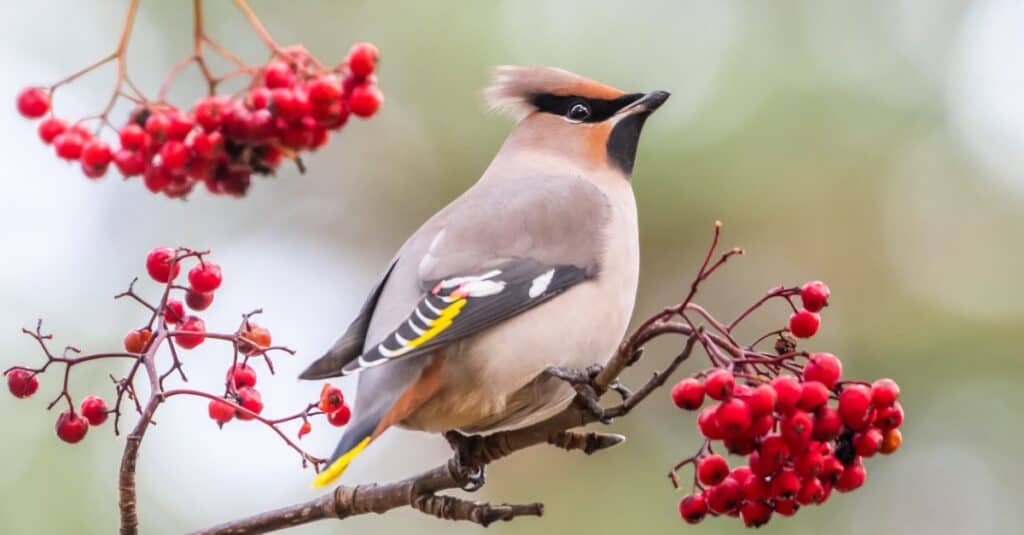
The cedar waxwing has a black stripe across its eyes, along with a black chin.
©iStock.com/hannurama
The cedar waxwing is a favorite winter bird of many Tennessee locals. This is likely due to its auburn crested head and tips on its wings, along with its chest with a gradient-like coloration ranging from brown to gray or even yellow. It reaches 7 inches in length and usually weighs around one ounce.
5. Northern Mockingbird (Mimus polyglottos)
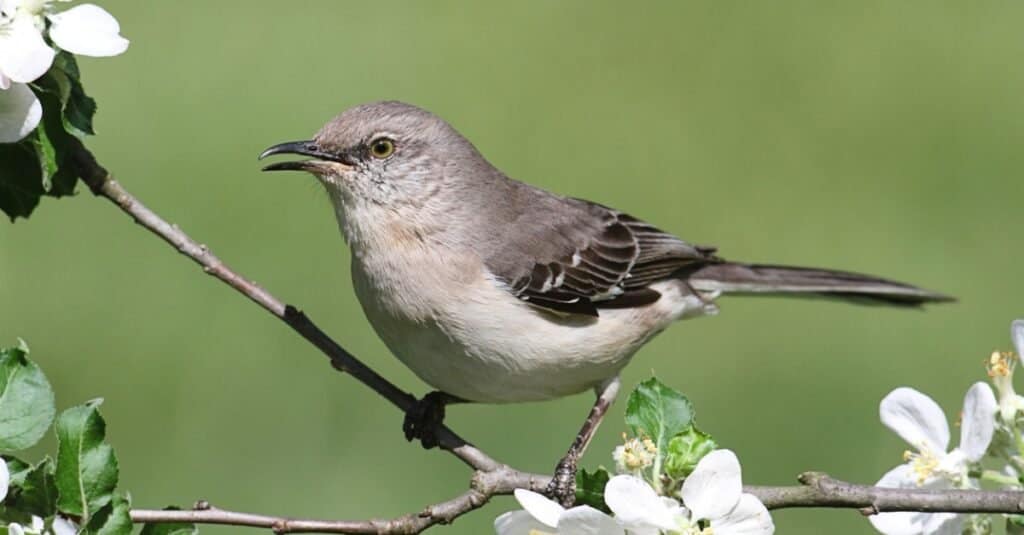
The northern mockingbird is notoriously territorial, sometimes even attacking its reflection!
©Steve Byland/Shutterstock.com
While highly intelligent, the northern mockingbird has a bit of a reputation amongst Tennesseans as a territorial and even aggressive species. This winter resident bird has a gray head accented by a thin black stripe across each eye.
6. Northern Cardinal (Cardinalis cardinalis)
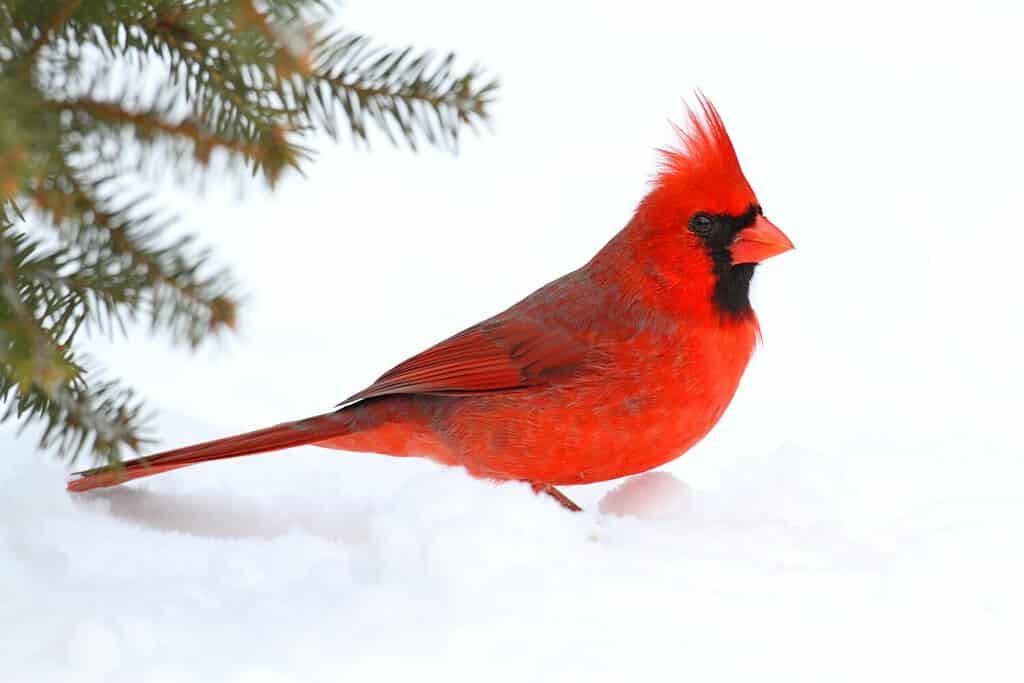
Northern cardinals can have long lifespans. The oldest specimen ever found in the wild was estimated to be nearly 16 years old!
©Steve Byland/Shutterstock.com
The northern cardinal is known mainly for its stunning red coloration. However, only males possess this fire-engine red plumage–females of the species are primarily brown or auburn. It’s one of Tennessee’s more common and well-known resident winter birds.
7. American Goldfinch (Spinus tristis)
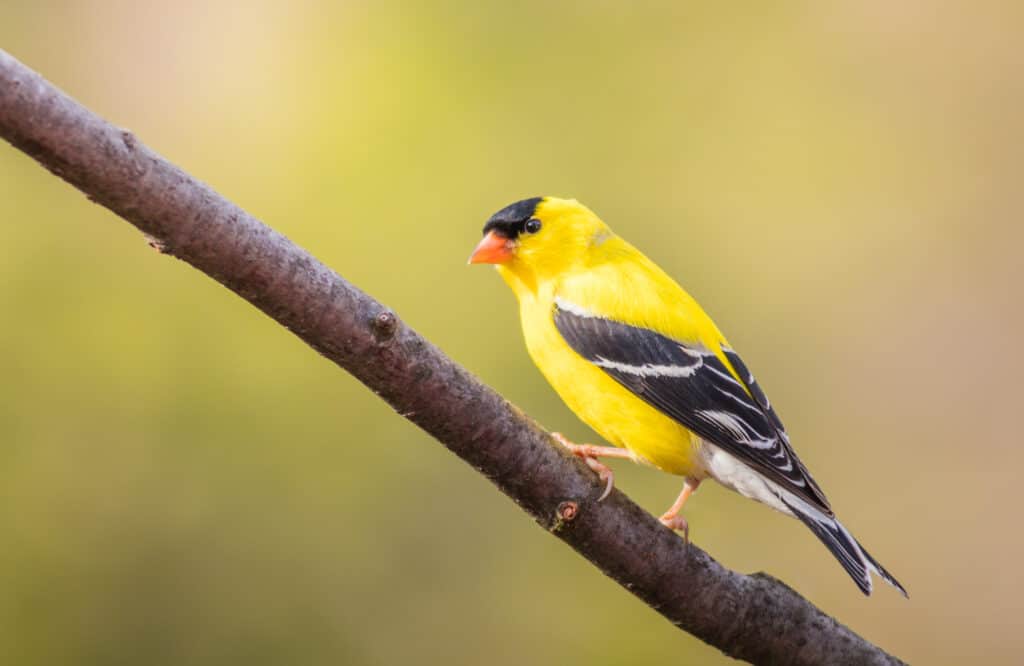
The American goldfinch’s striking yellow plumage makes it popular among Tennessee birders.
©Rabbitti/Shutterstock.com
The next resident winter bird in the Volunteer State we’ll briefly cover is the American Goldfinch, a stunning yellow and black bird with white stripes. As a finch, it’s a small bird, averaging 5 inches long with a weight of less than half an ounce.
8. House Finch (Haemorhous mexicanus)
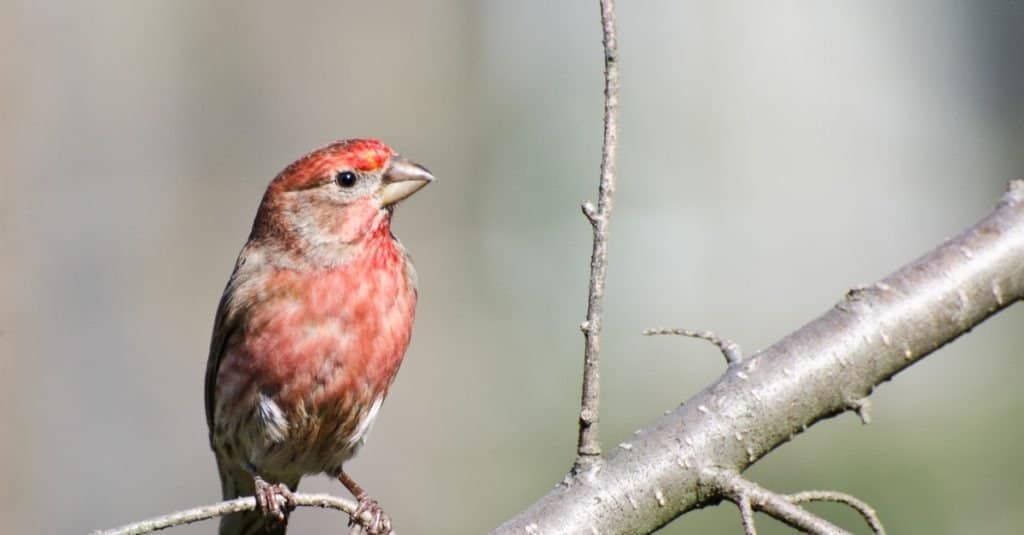
The house finch has a reddish-toned head and chest.
©rck_953/Shutterstock.com
Up next, we have the house finch, a gray bird with red feathers atop its head and across its chest. Like most other finch species, it is small, with a short, pointed beak and an average length of 6 inches.
9. House Sparrow (Passer domesticus)
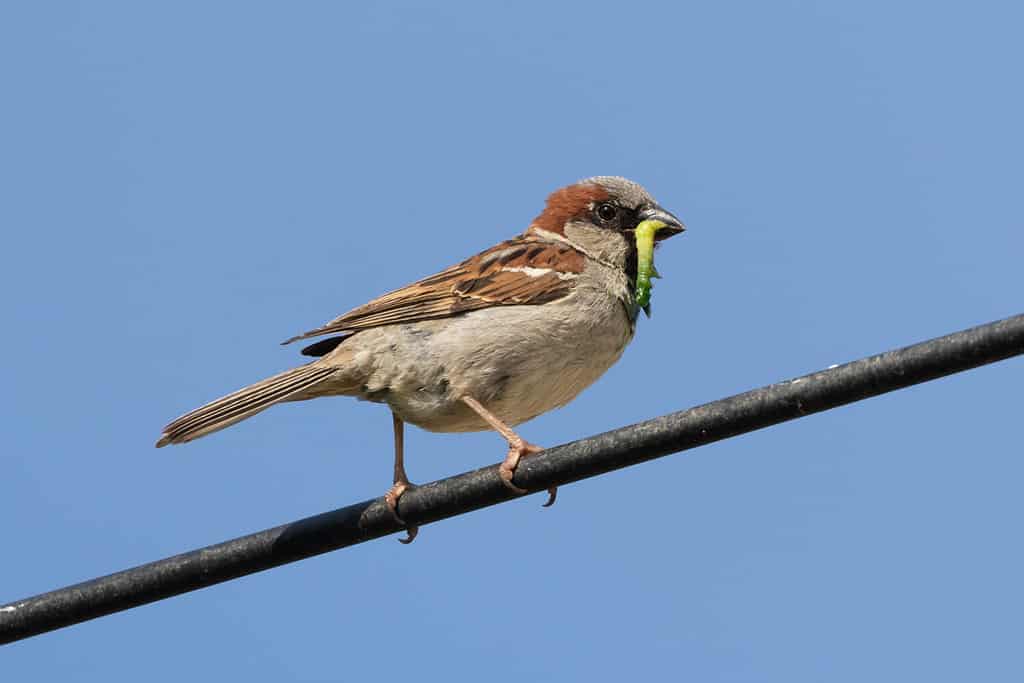
Black patches accent the house sparrow’s brown and gray head across the eyes and beneath the beak along its throat.
©Werner Baumgarten/Shutterstock.com
The house sparrow is another small and typical yet strikingly beautiful winter resident bird in Tennessee. This bird is gray and brown, with a black chin and black patches across the eyes. It averages 6 inches long.
10. Carolina Chickadee (Poecile carolinensis)
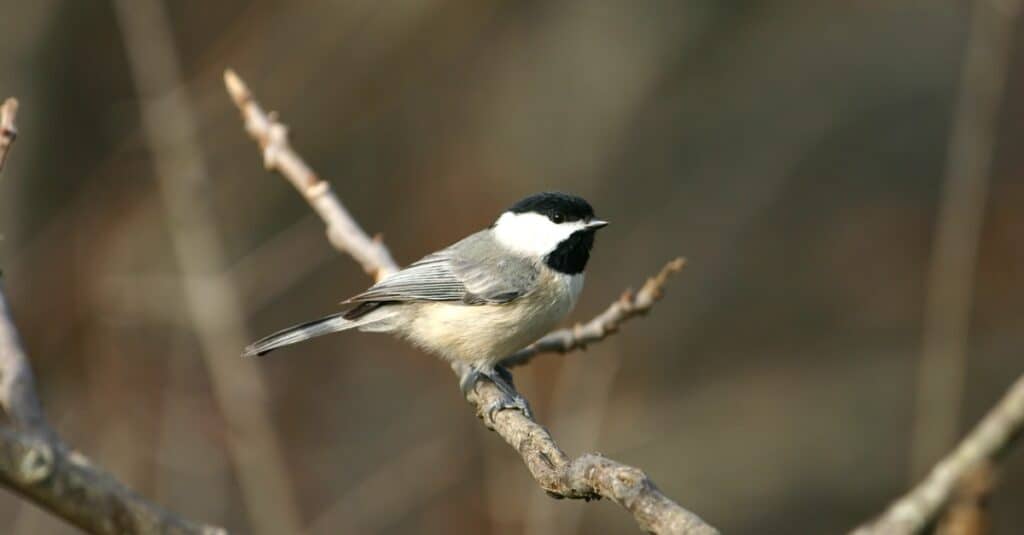
The Carolina chickadee has a large, flared white stripe across the head beneath each eye.
©iStock.com/lgunderson
The Carolina chickadee is easily recognizable thanks to the white stripe across its primarily black and gray head. The stripe extends across the face beneath each eye. It’s one of Tennessee’s smallest resident winter birds, averaging under five inches in length.
11. American Crow (Corvus brachyrhynchos)
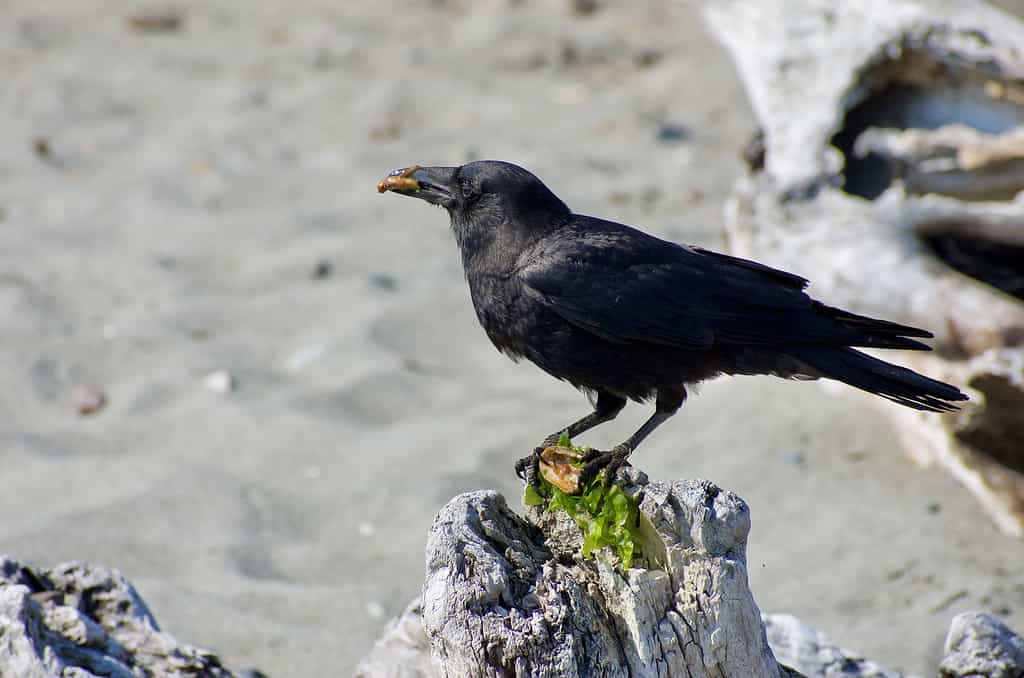
The American crow’s jet-black plumage and long, pointed beak make it easily recognizable.
©iStock.com/DanielLacy
Even an amateur birder could easily recognize the American crow thanks to its bulky body, long, pointed beak, and entirely inky black feathers. It’s also incredibly bright, estimated to be roughly on par with the intelligence of the average chimpanzee.
12. Red-Headed Woodpecker (Melanerpes erythrocephalus)
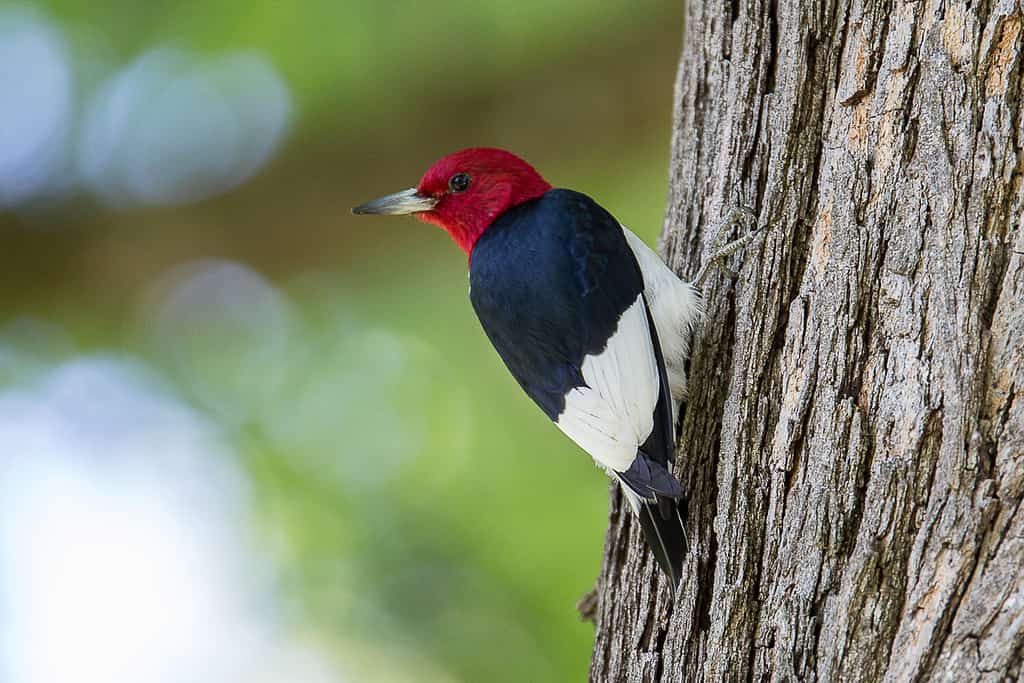
The red-headed woodpecker gets its common name from the deep crimson feathers adorning its head.
©Benjamin King/Shutterstock.com
The red-headed woodpecker is one of seven total species of woodpeckers in Tennessee. It’s known for stashing food in caches and crevices throughout its habitat, such as insects, nuts, and seeds. Its body is black and white, while its head is red.
13. Carolina Wren (Thryothorus ludovicianus)

The Carolina wren has a thin white stripe across its head.
©Steve Byland/Shutterstock.com
The Carolina wren has a loud call despite its small size of 5 to 6 inches long. Its mostly brown or grayish body is accented by a thin white stripe across the head, just above each eye.
14. European Starling (Sturnus vulgaris)
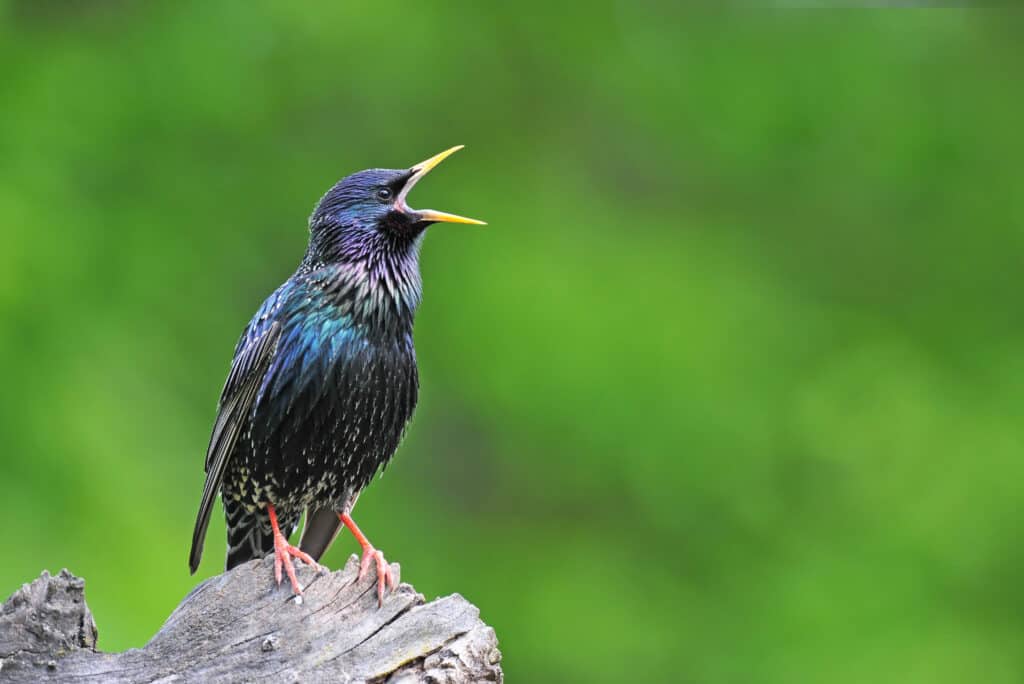
The European starling can mimic various sounds, even mechanical sounds and human speech!
©Soru Epotok/Shutterstock.com
The European starling is one of Tennessee’s more uniquely colored resident winter birds thanks to its iridescent bluish-green-toned black plumage. Lots of tiny, white speckles also accent its body.
15. Eastern Meadowlark (Sturnella magna)
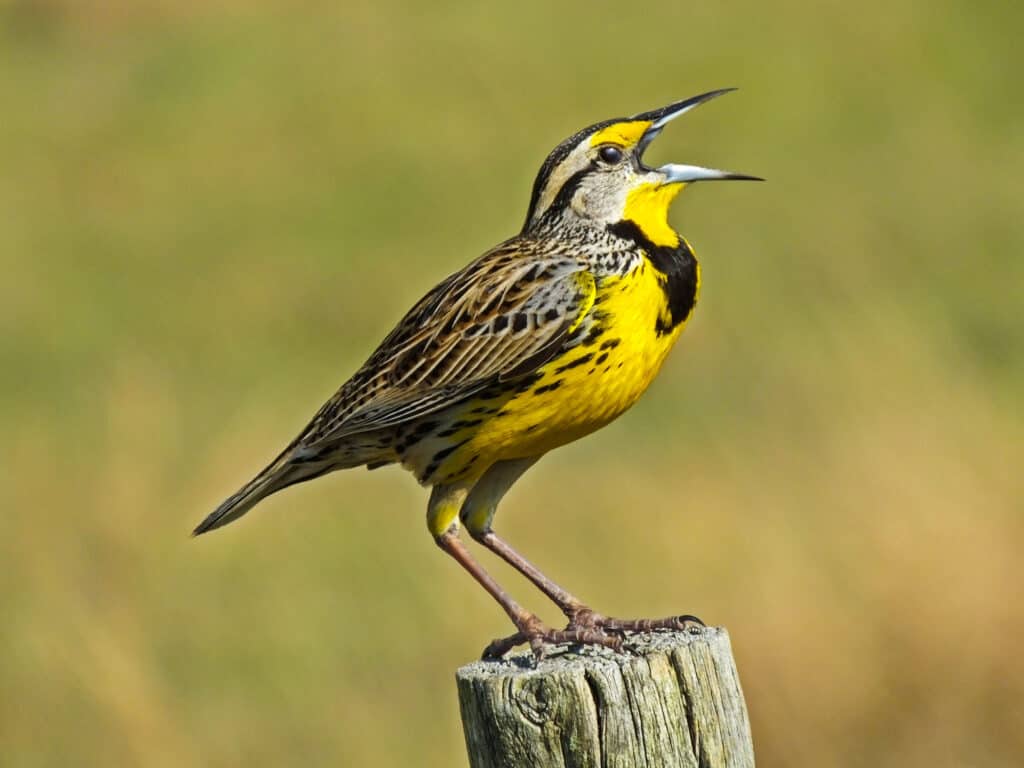
The eastern meadowlark has a lovely yellow chest.
©iStock.com/passion4nature
We’ll cap off our list with the handsome eastern meadowlark, a unique-looking bird with a bright yellow chest and throat. The rest of its plumage is a mottled grayish brown, while its beak is long and narrow.
The photo featured at the top of this post is © iStock.com/lgunderson
Thank you for reading! Have some feedback for us? Contact the AZ Animals editorial team.






